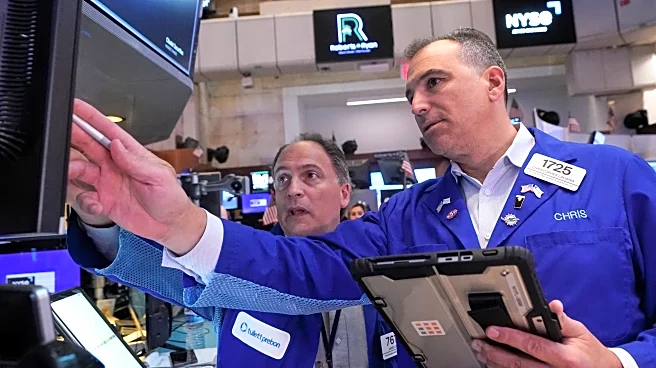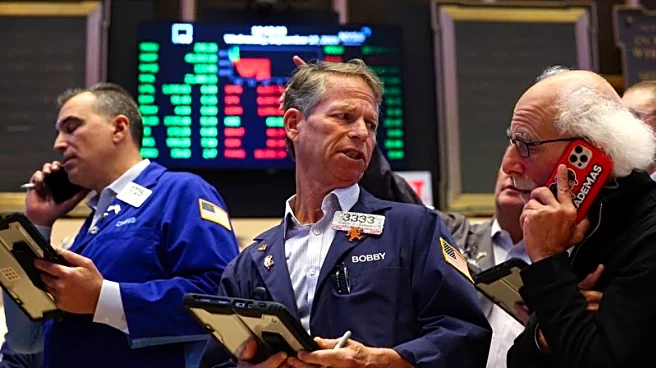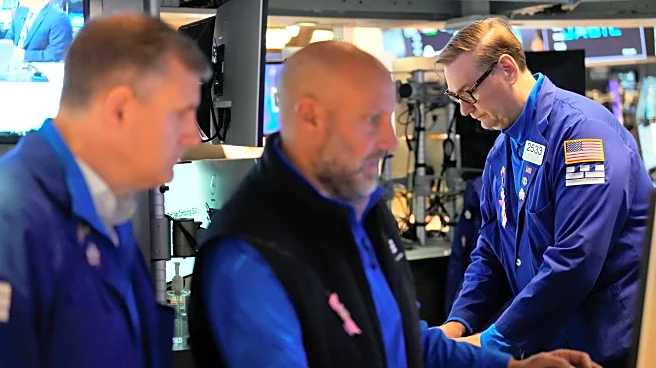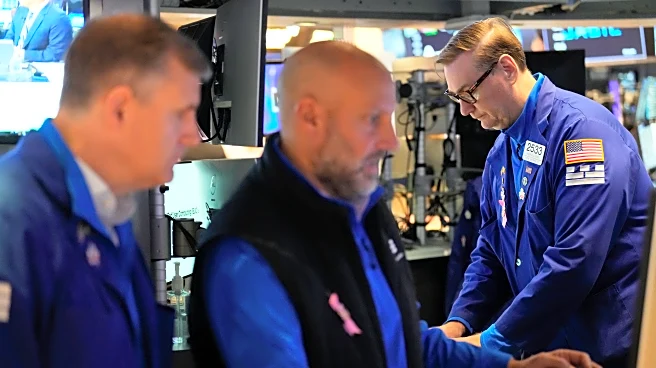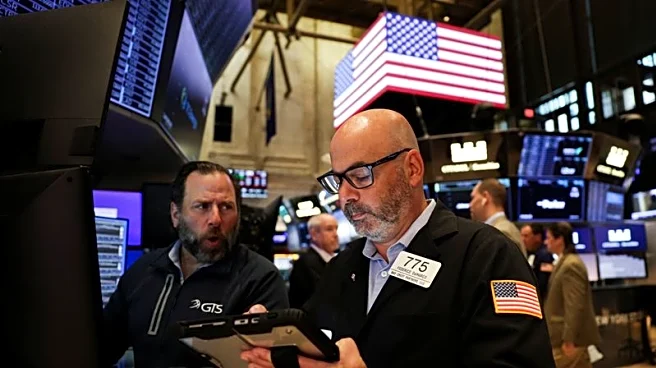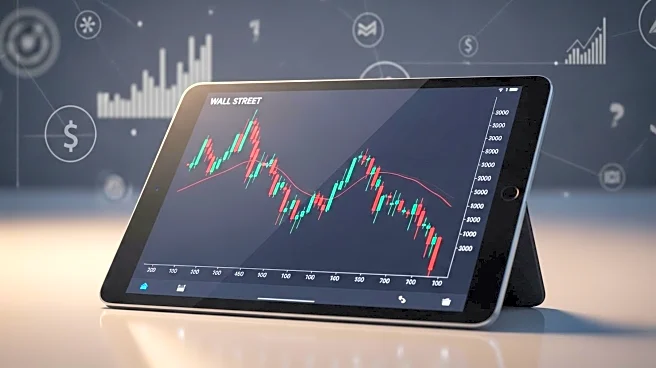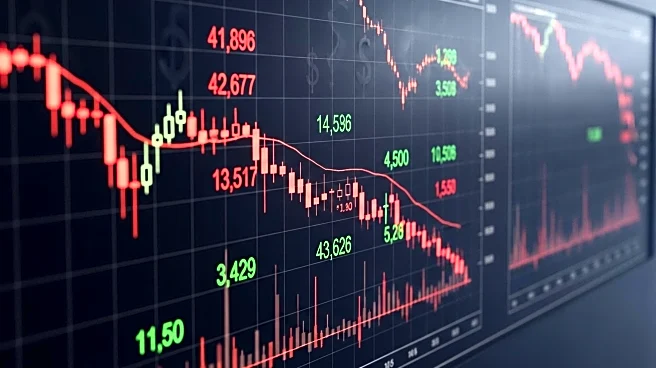What is the story about?
What's Happening?
U.S. stock markets closed September on a high note, with the S&P 500, Dow Jones Industrial Average, and Nasdaq Composite all posting gains. The S&P 500's September gain of approximately 3.5% marked its best performance since 2010. Defensive sectors, particularly healthcare, led the market, buoyed by Pfizer's significant rally following a drug-price deal with the White House. However, airline stocks faced declines due to concerns over potential disruptions from the government shutdown. The Federal Reserve is expected to cut interest rates at its October meeting, with markets pricing in a high probability of a rate reduction. The shutdown, which began on October 1, has resulted in the furlough of federal workers and the delay of key economic data releases.
Why It's Important?
The stock market's resilience amid the government shutdown highlights investor confidence in the underlying economic fundamentals and the anticipated support from the Federal Reserve's monetary policy. The shutdown's impact on sectors like transportation and its potential to delay economic data releases could create uncertainty. However, the strong performance of defensive sectors and the expectation of a Fed rate cut provide a buffer against potential market volatility. The shutdown's duration and its effects on consumer and business sentiment will be critical in determining the market's trajectory in the coming weeks.
What's Next?
Investors will be closely monitoring the duration of the government shutdown and its impact on economic data releases. The Federal Reserve's October meeting will be a key event, as it may decide on interest rate cuts based on the available economic indicators. Market participants will also focus on corporate earnings and other economic reports to gauge the broader economic impact of the shutdown. The resolution of the shutdown and its implications for fiscal policy will be crucial in shaping market sentiment.
AI Generated Content
Do you find this article useful?



